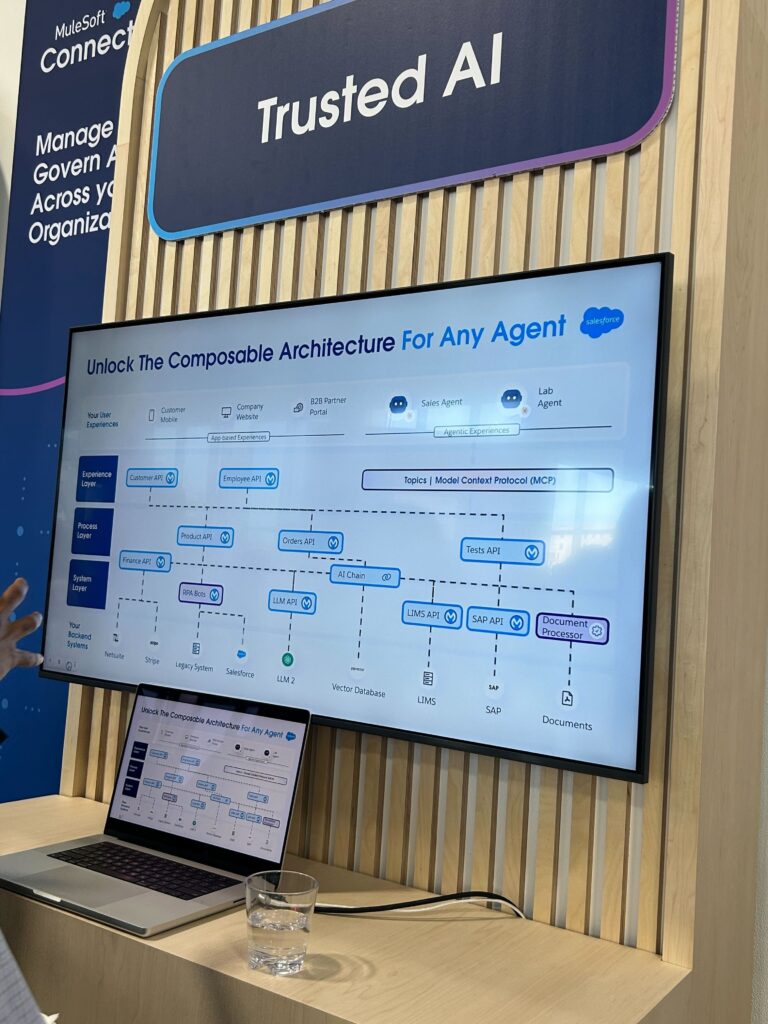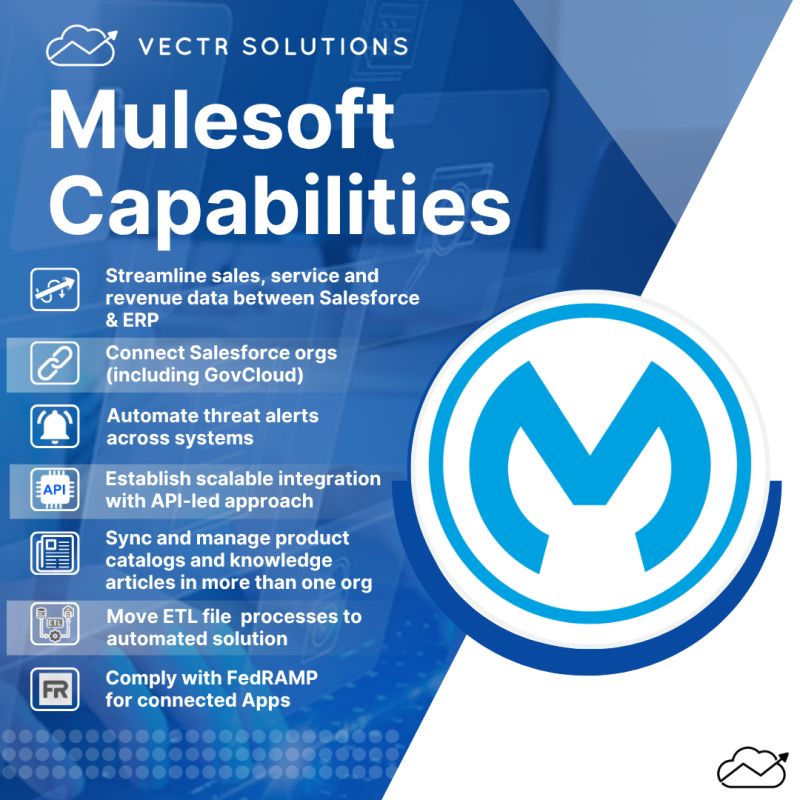In today’s fast-paced digital landscape, data is everywhere—but connecting it in meaningful, efficient, and scalable ways remains one of the biggest challenges for organizations. Mulesoft, although known for the API-led approach to integration, is now taking the big step forward by leveraging AI and AI agents to enhance the way organization’s systems and applications connect and share.
How do I know? Shortly before the July 4th weekend, I had the opportunity to attend an invite-only Mulesoft partner event in NYC. At that event, I was able to hear directly from leaders across industries about how MuleSoft, working in tandem with Salesforce agents, is reshaping how organizations think about integration—not just as a back-end technical function, but as a foundation for agility, automation, and AI.
This blog will take a look at the key takeaways from Mulesoft’s ConnectAI event–including challenges organizations face with integrations, how Mulesoft and Salesforce are working together to solve these challenges, and key considerations for an enterprise AI strategy.

The Integration Challenge We’re All Facing and the Mulesoft AI Solution
Traditionally, integration architecture has been a complex, expensive, and time-consuming process where IT teams are burdened with maintaining dozens—or even hundreds—of point-to-point connections between systems. Additionally, very time the business wanted something new, IT had to build custom connections between systems like customer databases, sales platforms, and apps.
These connections were hard to manage, didn’t grow well as the business grew, and didn’t let non-technical users get what they needed. Even accessing basic customer, product, or operational data across systems could be a major hurdle.
Queue MuleSoft and it’s API-led connectivity model. Instead of building rigid connections between applications, MuleSoft promotes the development of reusable APIs that can connect to core systems (like ERPs or CRMs), combine and transform data, and that serve specific user needs.
While APIs make integration more component-based and efficient, the next step in Mulesoft’s evolution is intelligent integration—or in Mulesoft’s words: creating “Actionable AI”. This is where Salesforce agents come into play.
Salesforce agents are AI-powered digital assistants that can understand intent/ goals and take action across systems. They leverage Salesforce metadata, business context, and integrations—often provided via MuleSoft—to automate processes or reveal insights.
At the event, presenters showed how AI agents solve common problems with integrations, including:
- Semantics: Different Systems Speak Different Languages
- AI agents can translate between systems using smart tools, making it easier to understand and use data.
- Finding the Right Data
- In the past, only experts could find the right data or API. Now, AI can suggest the right tools and even help build connections automatically based on what the user wants.
- Business Users Had Limited Access
- Before, only developers could build integrations. Now, anyone can use simple tools and natural language to ask for what they need—and AI will take care of the rest.
- Multi-System Orchestration
- AI agents can now manage big processes that touch several systems (like sales to payment), keeping everything organized and flowing smoothly.
- Governance and Compliance
- Security remains a priority. MuleSoft plans to provide robust API governance tools, while agents follow defined rules, roles, and access controls—keeping automation safe and compliant.
So how will it work?
Together, Salesforce and MuleSoft create an integration engine that’s intelligent, scalable, and ready for the future.
- MuleSoft APIs serve as the secure, managed gateways to enterprise data.
- Salesforce agents consume these APIs to reason, automate, and deliver outcomes—without human intervention or latency.
This architecture allows organizations to expose data once and use it everywhere, whether through automation flows, AI assistants, analytics, or customer-facing apps.

Final Thoughts
In addition to discussing and demonstrating their plan for actionable AI, there was also discourse on the responsible use and security of AI, as well as adoption. Per the industry experts, these conversations are likely to continue as we continue to unlock the capabilities of AI.
As a Muley, it was exciting to hear what Mulesoft and Salesforce are planning for the future–and the future is clearly composable. Whether you’re a developer, an architect, or a business stakeholder, now is the time to rethink what’s possible with integration.
Reach out to Vectr Solutions to connect with a MuleSoft-certified expert and explore what composable, intelligent integration could look like for your organization.



